Single frequency lasers
A single-frequency laser is a type of laser which operates within a singular resonator mode, achievable when the net gain bandwidth of the laser remains narrower than the frequency spacing of the resonator modes [1]. In cases where the mode spacing isn’t adequately large to support a single resonator mode, single-frequency operation is maintained through the utilization of intracavity filters. This enables the single-frequency laser to possess an exceedingly narrow linewidth, frequently measuring only a few kHz [2], and an extended coherent length. A clear association exists between the coherence length and the spectral width of the laser [3].
Where λ0 the is the center wavelength of the laser, and the Δλ is its full width at half maximum (FWHM) intensity. Various designs for the laser source can achieve single-frequency operation, differing in terms of achievable output power, beam quality, noise level and compactness. They can be grouped in different types, such as single-frequency diode-pumped solid-state laser, fiber lasers, and single-frequency semiconductor lasers.
In DPSSLs, the resonator is pumped by diode lasers, which are compact and can efficiently pump if the absorption band of the solid-state gain medium aligns with their emission band.
Additionally, diode laser pumping offers a prolonged operational lifespan, typically around 20,000 hours, rendering it suitable for space-based applications. Since its initial demonstration in 1968 [4], neodymium-doped yttrium-aluminum-garnet (Nd:YAG) has emerged as the predominant gain medium in DPSSLs. The advantages of employing this gain medium stem from both the doping with Nd3+ ions and the YAG host.
Nd:YAG’s structure facilitates effective absorption of pump radiation due to its relatively narrow wavelength bands, particularly around 807 nm, which corresponds to an output of 1.06 μm. As a host material, YAG ensures high thermal conductivity and excellent optical quality [5]. Single-frequency DPSSLs are frequently developed in either longitudinal [6] or non-planar unidirectional ring resonator [7] configurations.
Figure 2. Typical configurations of diode-pumped soli-state lasers, (a) longitudinal resonator, (b) unidirectional ring cavity (Courtesy of Dr. E. Balliu, HÜBNER Photonics).
These lasers can function either in continuous mode (CW) by employing a CW pump diode or in pulsed mode with Q-switching. Single-frequency lasing is accomplished through either a wavelength-dependent loss structure like a Fabry-Perot filter or Lyot filter, or through the Nd:YAG medium itself, as exemplified by the non-planar ring oscillator (NPRO) lasers. The latter, pioneered by Jane and Byer [8], stands as one of the most prevalent single-frequency DPSSLs, frequently utilized as a seed laser in fiber amplifiers, particularly for gravitational wave detection [9], owing to its extremely narrow linewidth (only a few kHz) and high stability. The output power range achievable by single-frequency DPSSLs typically falls below 3 W at 1064 nm.
The technology behind our single frequency operation
At HÜBNER Photonics we recognize the important role that linewidth plays when it comes to single frequency lasers. That is why the single frequency and single transversal mode operation of our lasers result in extremely narrow laser linewidths (<1 MHz specified and <100 kHz typically), low intensity noise of down to <0.1% RMS and a perfect diffraction limited TEM00 beam.
Another prominent feature of our lasers is the HTCure™ technology used to manufacture them. HTCure™ is a proprietary method for fixation of cavity components developed by Cobolt to ensure extremely high thermo-mechanical stability. During the manufacturing process we build our lasers into a hermetically sealed sub-package in a planar configuration. As part of our quality control process, the laser is baked up to over 100° C for several hours and at multiple phases to ensure it does not go out of alignment or sustain damage.
The HTCure™ technology addresses the issue of thermal and mechanical shocks or vibration that the laser might sustain over its lifetime, thus enabling us to offer a long warranty period to our customers.
Lastly, we also know that the choice of cavity design can affect the laser’s output characteristics. Our laser cavities include frequency selective optics which stabilize the resonator and prevent all but one longitudinal and transversal mode of the laser from being amplified in the oscillator. By combining advanced cavity designs, standing-wave as well as ring-cavities, with a thermo-mechanically stable platform, active temperature control of the complete cavity and robust fixation of miniaturized high precision optics, all our single frequency lasers provide very stable single frequency or single longitudinal mode operation over the whole laser lifetime and over a wide range of operating conditions.
Find the right single frequency laser for you
We pride ourselves in providing the broadest range of compact and extremely stable single frequency lasers. Over the years we have developed Cobolt lasers that are single frequency, as well as C-WAVE lasers which offer widely tunable continuous wave (cw) single frequency output based on optical parametric oscillator (OPO) technology.
The Cobolt lasers are all single frequency in the 04-01, 05-01 and 08-01 Series.
These lasers are by default also single longitudinal mode (SLM) lasers and are diode-pumped solid-state (DPSS) lasers, or as Cobolt have embraced: Diode-Pumped Lasers (DPL), all with intra-cavity nonlinear frequency conversion.
C-WAVE Series, also a single frequency laser, offers a wide wavelength range of tunable single frequency output from 450 nm up to 740 nm and into the NIR.
Both the Cobolt and C-WAVE lasers are suitable not only for advanced laboratory research but also for integration into analytical instrumentation for applications such as Raman spectroscopy, bioimaging, interferometry, holography and quantum technology research.
References
[1] Yang, Z., Li, C., Xu, S., Yang, C. (2019). Fundamental Principle and Enabling Technologies of Single-Frequency Fiber Lasers. In: Single-Frequency Fiber Lasers. Optical and Fiber Communications Reports, vol 8. Springer, Singapore; https://doi.org/10.1007/978-981-13-6080-0_2.
[2] Bingkun Zhou, Thomas J. Kane, George J. Dixon, and Robert L. Byer, “Efficient, frequency-stable laser-diode-pumped Nd:YAG laser,” Opt. Lett. 10, 62-64 (1985).
[3] C. Akcay, P. Parrein, and J. P. Rolland, “Estimation of longitudinal resolution in optical coherence imaging,” Appl. Opt., vol. 41, pp. 5256–5262, 2002.
[4] M. Ross, “YAG laser operation by semiconductor laser pumping,” in Proceed- ings of the IEEE, vol. 56, pp. 196–197, 1968.
[5] D.W.HughesandJ.R.M.Barr,“Resonantopticalsecondharmonicgeneration and mixing,” J. Phys. D: Appl. Phys., vol. 25, pp. 563–586, 1992.
[6] T. Baer, “Large-amplitude fluctuations due to longitudinal mode coupling in diode-pumped intracavity-doubled Nd:YAG lasers,” J. Opt. Soc. Am. B, vol. 3, pp. 1175–1180, 1986.
[7] T. J. Kane and R. L. Byer, “Monolithic, unidirectional single-mode Nd:YAG ring laser,” Opt. Lett., vol. 10, pp. 65–67, 1985.
[8] A. Buikema, F. Jose, S. J. Augst, P. Fritschel, and N. Mavalvala, “Narrow- linewidth fiber amplifier for gravitational-wave detectors,” Opt. Lett., vol. 44, pp. 3833–3836, 2019.
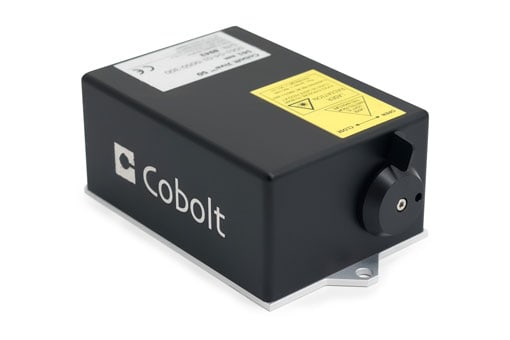
Cobolt 04-01 Series
Single frequency, CW diode pumped lasers
Wavelength: 457 nm – 1064 nm
Power: 25 mW – 400 mW
Applications: Raman, microscopy, LDV, DLS
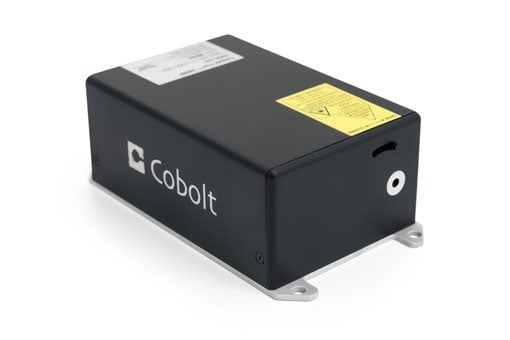
Cobolt 05-01 Series
High power, single frequency, CW diode pumped lasers
Wavelength: 320 nm – 1064 nm
Power: 10 mW – 3000 mW
Applications: Holography, Raman, microscopy, flow cytometry, research
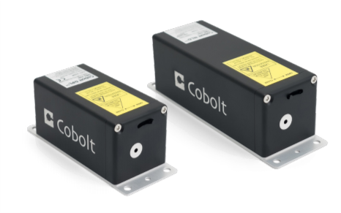
Cobolt 08-01 Series
Compact narrow linewidth lasers
Wavelength: 405 nm – 1064 nm
Power: 25 mW – 500 mW
Applications: Raman spectroscopy, interferometry, dynamic light scattering.
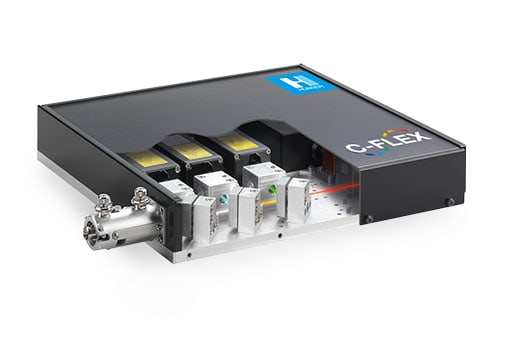
C-FLEX
The compact and flexible laser combiner
Wavelength: 375 nm – 1064 nm
Power: 50 mW – 1000 mW
Applications: Microscopy, Raman, holography
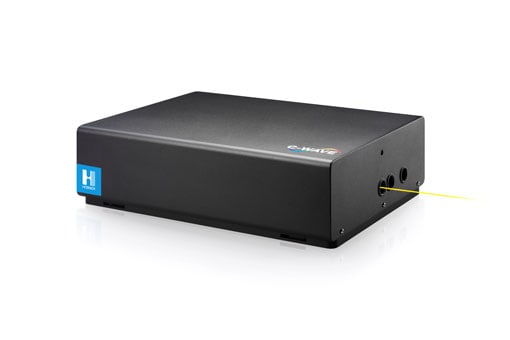
C-WAVE Series
Widely tunable continuous-wave lasers
Wavelength: 450 nm – 1900 nm
Power: 200 mW – 1000 mW
Applications: Nanophotonics, quantum research, Raman (TERS)



